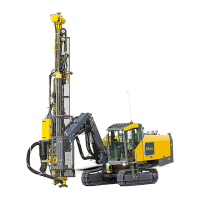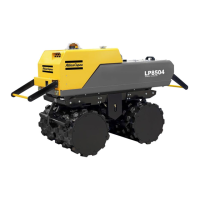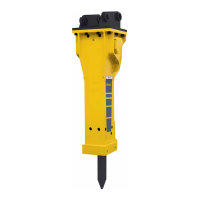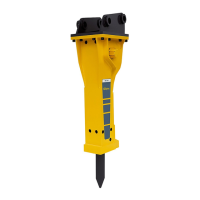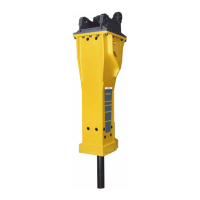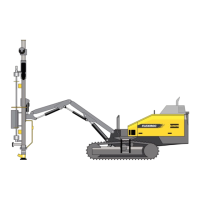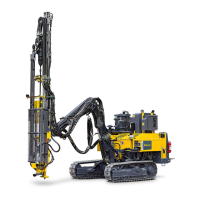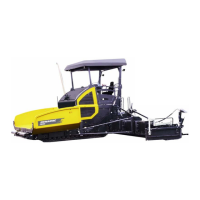SmartROC D65 T4F 10 Options
195 No: 713944459.6 en
10.11.3 Drilling and sampling
It is assumed that the operator already has knowledge of normal drilling with the rig.
Drilling
Setting up for drilling is carried out in the same way as for normal drilling. It is important
that the cyclone and splitter are vertical.
Collaring is performed during normal drilling. During collaring it is appropriate to let the
knife valves (cone splitter) or the hatch (Jones riffle splitter) remain open in order to check
that the cuttings/air mixture are flowing through the cyclone. When this takes place the
lower knife valve/hatch is closed.
Jamming takes place more easily during RC drilling than with conventional drilling. A guide
adapter above the down-the-hole rock drill makes it easier to work loose after jamming.
When gripping the drill pipes with the drill-steel support or breakout table, it is important not
to do it further away than 300 mm from the thread, otherwise the tube may break.
Sampling with the Jones riffle splitter
The hatch is closed during drilling. When a sample length is fully drilled the feed is
switched off. After a few seconds all the cuttings have entered the cyclone. At which point
the hatch between the cyclone and splitter is opened, so that the sample can flow out and
be collected. While the hatch is opened a vibrator starts in order to facilitate emptying.
When the hatch has been closed drilling is resumed by switching on the feed again.
Sampling with the cone splitter
The upper knife valve is open and the lower knife valve is closed during drilling, so that the
sample is collected in the intermediate chamber. When a sample length is fully drilled the
feed is switched off. After a few seconds all the cuttings have entered the intermediate
chamber. At which point the upper knife valve is closed while the lower knife valve is
opened, so that the sample can flow through the cone splitter and be collected. While the
lower knife valve is opened a vibrator starts in order to facilitate emptying. When the lower
knife valve has been closed and the upper opened drilling is resumed by switching on the
feed again.
When the cuttings are moist, which makes handling of the sample more difficult, both knife
valves can be open during drilling. However, this should be avoided.
10.11.4 Operation of Metzke Blowdown Valve
The blowdown valve consists of one chamber which holds a rectangular piston or spool
that slides to and fro to open or close ports to the flows of air and cuttings. A hydraulic cyl-
inder activates the spool.
WARNING
Serious injury
The blowdown valve must not be modified to blow air down the test hose ('blow up').
This can cause high pressure in the test hose, leading to a catastrophic hose failure
and possibly serious injury.

